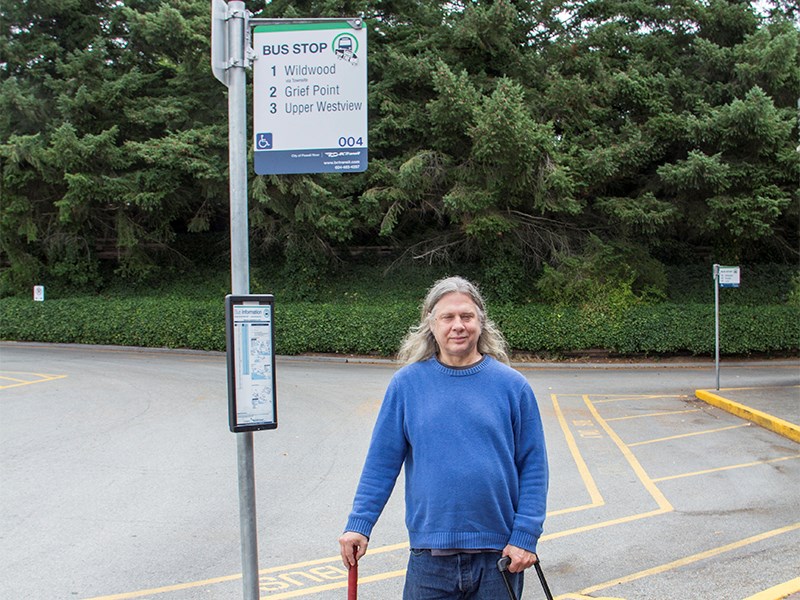City of Powell River, Tla’amin Nation and Powell River Regional District governments will come together later this month to talk about improving regional public transportation.
Recent community reports have identified regional transportation as a priority for local governments to enhance, stated regional district chief administrative officer Al Radke in a August 3 letter to City of Powell River council.
“Observations have been made that youth find it difficult to hold down part-time jobs, or enjoy an evening at the movies, due to the difficulty or lack of public transportation to get home in the rural areas,” Radke stated in the letter. “Seniors have also expressed mobility issues.”
The next C3 meeting, a community forum that brings representatives from the three local governments together, is scheduled for Thursday, September 21. While the meeting will be dominated by a presentation on the draft social action plan, development of a regional public transportation service exploration working group will also be included on the agenda.
City councillor Russell Brewer said he would like the group to explore the idea of developing something similar to a shuttle-bus service that would be less expensive to operate and could run with greater frequency.
“Travel around the world and you see these little minivans and shuttles running around,” said Brewer. “They're cheap and they're coming all the time.”
Tla'amin Nation hegus Clint Williams said the first nation has considered purchasing a passenger van or small bus to help improve services for his community.
“We haven’t got there yet, but there needs to be more options,” said Williams.
Williams added that a shuttle service would not only be used by residents, but also by visitors and could be a part of improving tourism infrastructure.
Radke said the regional district has requested that Crown corporation BC Transit increase service for rural areas. While some improvements will be coming in 2018, they will not include substantial changes, he added.
Making improvements to the service is not as simple as allocating more money toward an expanded service, said Radke.
“Even if the regional district was willing to ante up additional funding for public transportation, BC Transit is bound by their matching obligation agreement,” he said. “So, until such time as their funding increases, additional or extended routes are not in the cards.”
Funding for transit is split between the province through BC Transit and the local government.
According to BC Transit spokesperson Jonathon Dyck, the province provides 46.69 per cent of funding for conventional transit while local government contributes 53.31 per cent and keeps all revenue from the fare box.
“As there are two funding sources, both have to be willing to contribute to expansion projects,” said Dyck. “We’re always willing to discuss expansion with local governments and identify the areas that could benefit most from additional resources.”
Brewer said the new regional working group will need to be more creative to address the problem, rather than simply suggesting more bus routes or trips are needed.
“We can only throw so much money at it and we're limited by the operating agreements we have with BC Transit,” said Brewer.
The regional district not only faces the constraints of BC Transit funding, but also has to meet provincial regulations for commercial passenger carriers if it tries to partner with a company to provide the service, said Brewer.
“That's the kind of thing I'd like to look at and explore,” he added.
If rural communities are faced with provincial regulations that hinder transportation, then the committee could step up its advocacy with the provincial government, said Brewer.
Williams said he expects the current need to grow in coming years as the Tla’amin treaty opens up more areas near Lund and Powell River for homes.
The community has an immediate need for more improvement in public transportation and whatever is developed, it will have to be affordable for everyone to use, he added.
“There are families living in our community who do not have any transportation at all,” said Williams.
The current bus service is appreciated, but having to wait for hours to return home after grocery shopping is not optimal for most people, he added.
Williams said the community is already organizing ride-sharing in order to reduce the costs of paying for taxi service.
“It happens in our community because it's cheaper than a taxi and carrying $150 of groceries on a bus is pretty tough,” he said.
According to the service exploration working group’s terms of reference, goals for the committee include looking at how the current system of public transportation fails to address community need, identifying potential solutions, developing business cases for them and exploring partnership agreements.



